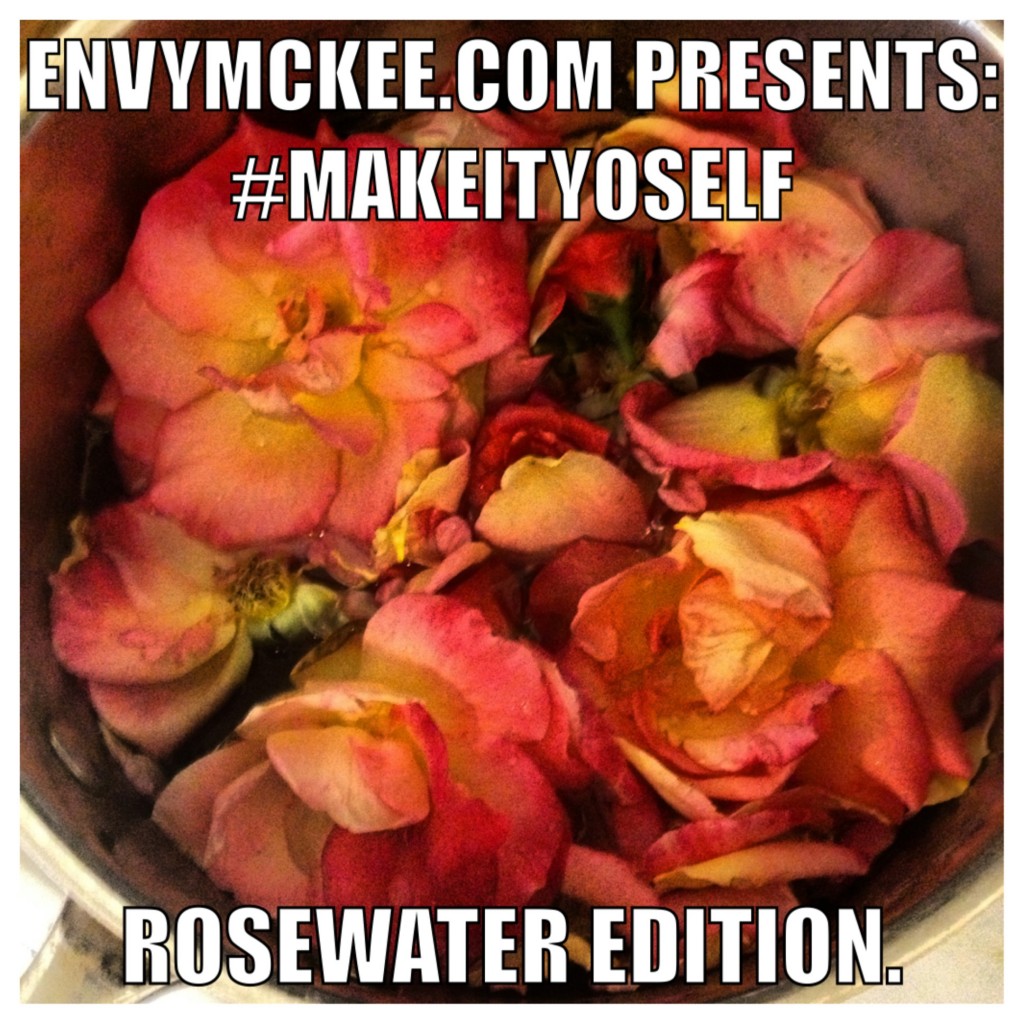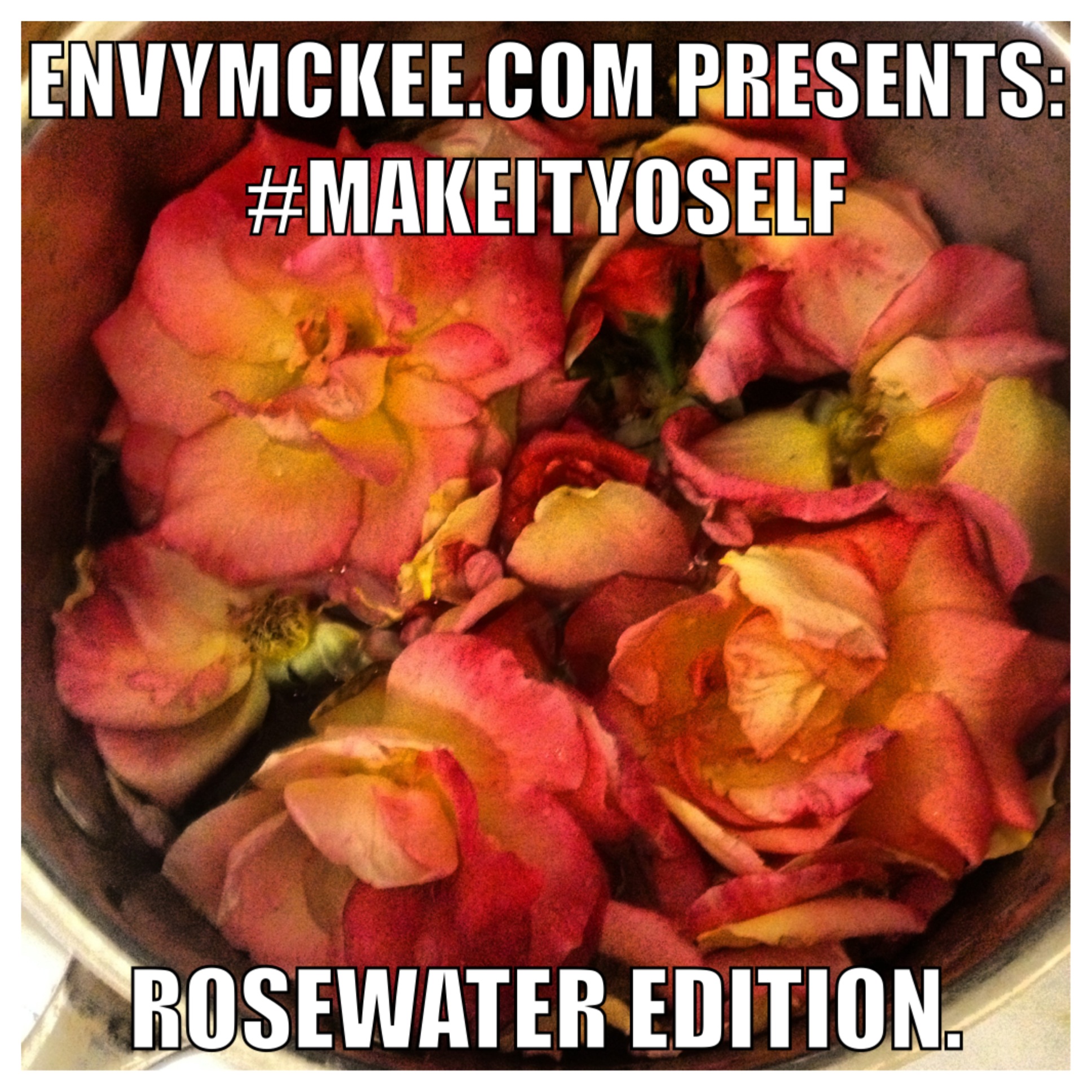
Since ancient times, roses have been used medicinally, nutritionally, and as a source of perfume. The ancient Greeks, Romans and Phoenecians considered large public rose gardens to be as important as croplands such as orchards and wheat fields.
It has been suggested that the Persian polymath Avicenna discovered how to make rose water in the tenth century.” ~The All Knowing Wikipedia
I make a lot of my own stuff. We’ll call said stuff Curiously Awesome Goods. Anyone who knows me knows that I make my own deodorant and toothpaste and preserves and lip balm and such. Soap… soon. Anyway. So now we can add rose water to the list of all the toiletries I make myself. What can I say? My skin has about zero tolerance for toxins. So as I was doing my natural toner research, I came upon rosewater. East Indian women have been extolling the benefits of rose water for eons. Not for nothing, there’s a lot of great skin walking around out East.
So then I was like–I wonder if I can make rose water myself. And alas, I can. I suppose then the question becomes, why would I want to? Beyond because I can. Well, according to the Discovery Health website:
“One of the main benefits of rose water is that it acts as an anti-inflammatory, soothing irritated skin [source:Scirrotto]. Some people also use roses as a rich source of antioxidants, which can help strengthen skin cells and regenerate skin tissue [source: Garwood-Jones]. These properties, proponents believe, make rose water particularly beneficial to people with sensitive skin.
Those with dry skin sometimes use rose water as a moisturizer. The idea behind this is that sugars found in rose petals add to rose water’s soothing effect, and its natural oils trap moisture in the skin, helping it feel and look smoother [source: Garwood-Jones]. Some experts even believe that rose water can play a role in reducing damage from sun exposure. Too much sun destroys elastin, the fibers that give your skin its ability to stretch. When those fibers break down, they cause your skin to lose firmness and sag [source: WebMD]. There’s some evidence that rose water may help decrease damage to the skin’s elastin fibers and prevent wrinkles, but researchers are still testing this theory [source: Baumann].” You can read the whole article here.
For someone who has both dry AND sensitive skin, I can say with some amount of emphasis that rose water makes sense to add to my skin care regimen. Particularly with cold, brusque weather not but a few months away. Sure, I could probably get some from my local Indian market, but we all know preservatives and processing have to happen to give anything topical and sold in stores its shelf life. If I can make my own, all the better and so I did. Making rose water is surprisingly easy. It’s literally two ingredients: rose petals and distilled water. That’s it. There are a couple of really jiggy ways to process, but I chose the path of least equipment: a pot (with a lid). I will also say, so far, my dry sensitive skin likes her some rose water. The idea is to apply it with a cotton ball at night like you would a toner and off to bed you go. The rose water removes impurities and helps your skin heal while you sleep. I’ve only been using it a few days, but already my skin is far less dry and rose petal soft to the touch. So. This is definitely one recipe I would recommend to #MakeItYOSelf as an alternative to the store bought kind. Ready?

So that’s the rose water making process. Easy right? A pot, rose petals and distilled water. Like I said, there are some jiggier ways to make it and in the future I’ll look into those ways, try them and share. In the meantime, here’s a great way to pamper your skin with an all natural toner you can make #YOself! Once you make your rosewater, hit up the comment section and tell me how it went! If you happen to be a rose water making expert, share the love! What process do you use? Let me know in the comment section below. Until next time…
Osho Lovianhal (Light the LOVE in ALL) friends,
-e-
